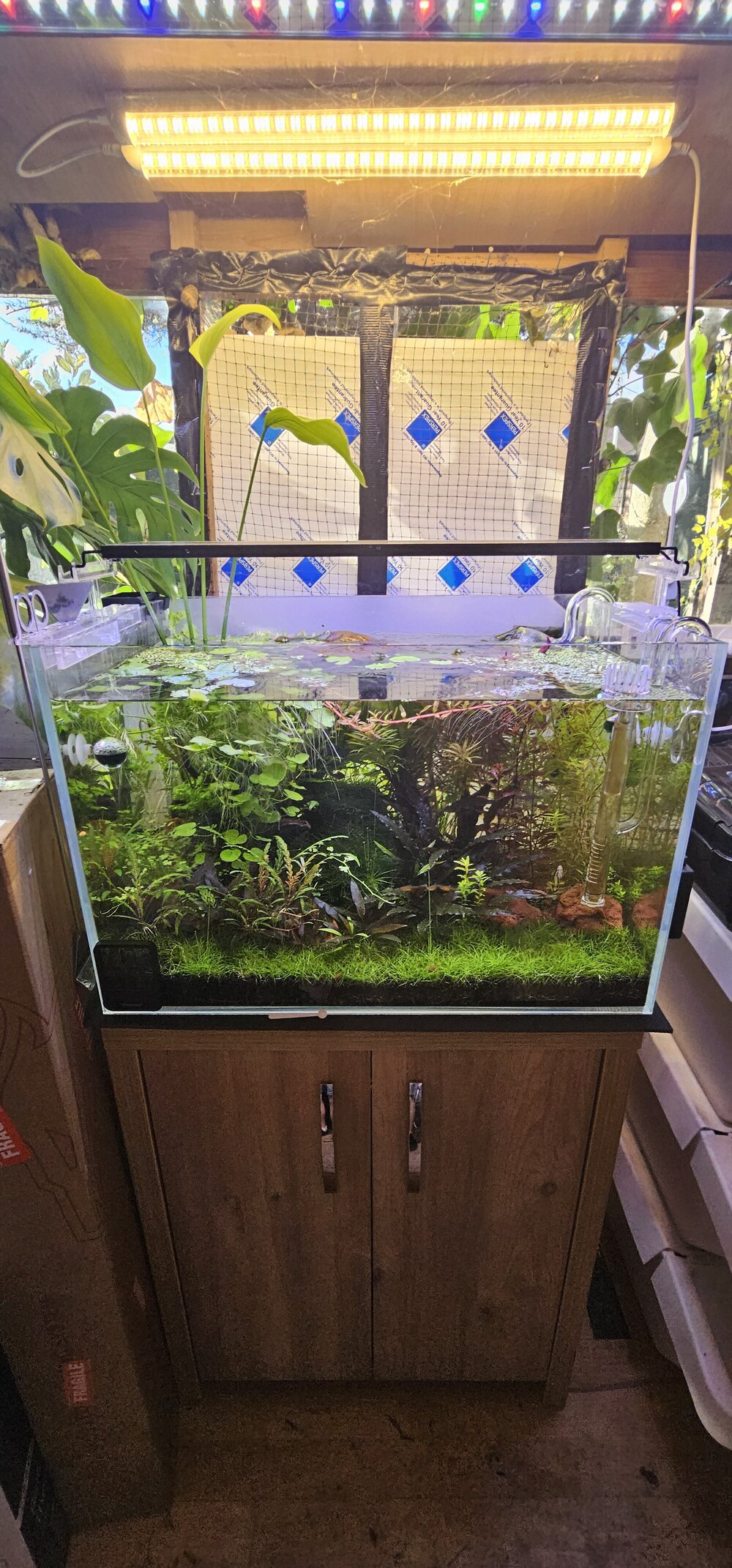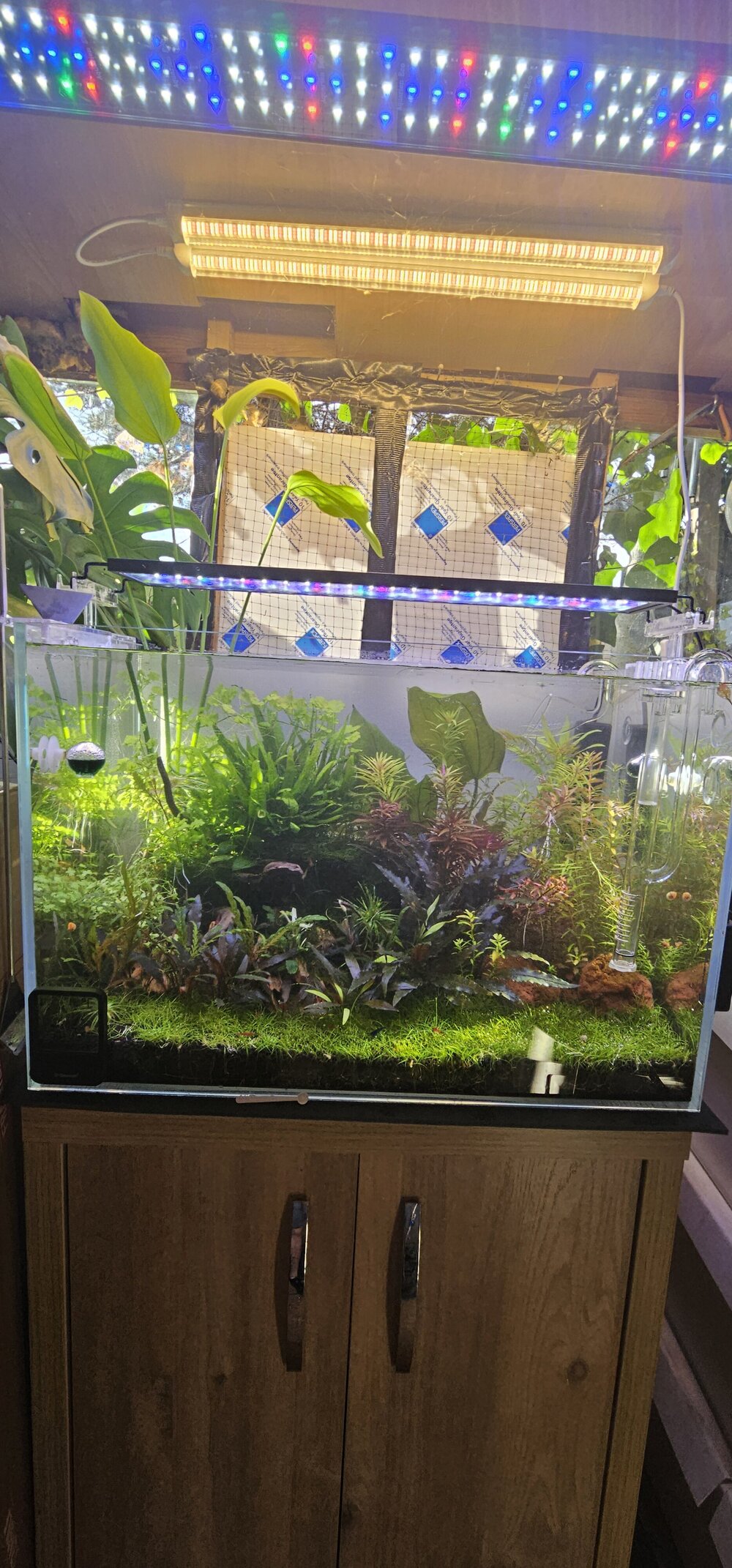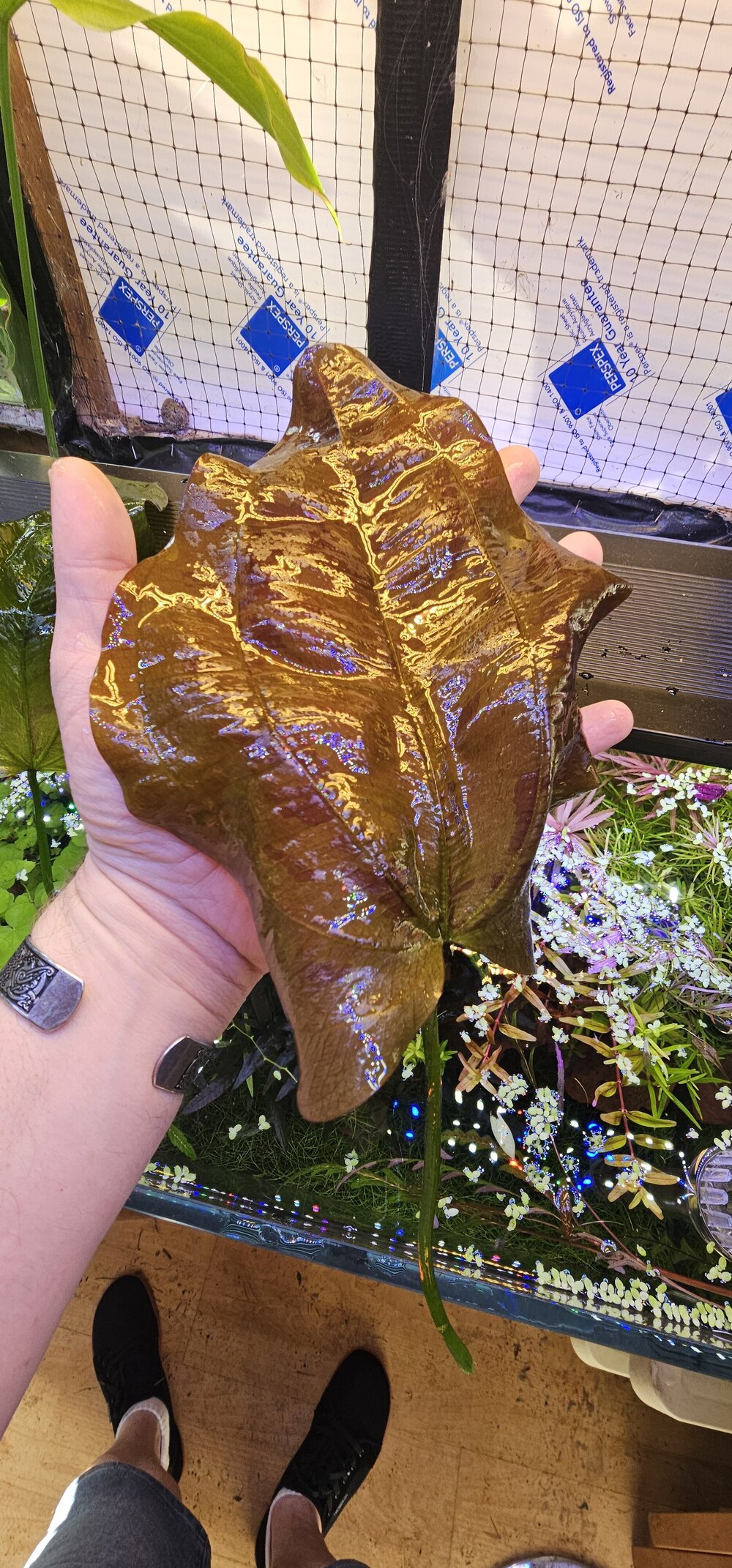There are many interesting Echinodorus sp. to grow emersed...

You might find the below thread dedicated to emersed growing sword plants interesting. It already runs till 2018 and continues going to this day, tho it's in German, you might need a translator or watch pics and read the plant names to find out about potential varieties.
<The Year of the Echinodorus.>
I guess there is nothing much to add to this thread that isn't tried before.
Flowgrow also has one of the most extensive databases regarding aquatic plants and its growth habit descriptions are also in English with a complete Sword plant list.
TODO

www.flowgrow.de
I have grown quite a few Sword plants in emersed form and they are rather very interesting plants that seem to have a type of mechanism that senses the environment they are in and it will grow accordingly. If planted submerged they tend to grow larger than their normal terrestrial form. As seen in the picture
@Tim Harrison posted. If these plants are planted as small young plants at such depth, they first transition back into submerged form and tend to keep growing till the leaves reach the water's surface, then the leaf tip will stick out of the water into the atmosphere and it will start to dry out and wither away. Now I have to speculate a bit and it's what I experienced watching this plant's behaviour. What most people will do, is cut this damaged semi-emerged leaf off the plant since it's damaged anyway. I didn't and then other leaves will follow doing the same thing. Now it looks like this is a trigger point for the plant to let it know where the surface is. And it stops making submerged leaves and it will revert to only growing long leafstalks whit a tiny young leaf in emerged form. Once the stalk is long enough for the leaf to get to the atmosphere the leaf will grow bigger. After a few leaves have reached the surface it will start to develop flower stalks and flowers. According to the depth it is planted the plant's genetic build-in mechanism feels the difference between being submerged or being in the atmosphere, plant it 30cm deep or 50cm deep it will grow accordingly with longer submerged leaves and longer emerged leaf stalks. Thus the deeper the plant is planted the taller it will grow this might have some genetic limits per sp. that I do not know. I had a Kleiner Bär planted 30cm deep that grew into a 60cm emerged form plant, when I grew offshoots from this same plant completely emerged in a pot it didn't grow much bigger than 20 to 30cm. There was no water level to overcome to get to the atmosphere thus no need to grow long leafstalks and stays a lot smaller.
Amazing to witness a bog plant having a kind of genetic build-in intelligence to feel and know where it's at and switch forms and grow accordingly...

I guess all bog plants with aquatic and terrestrial forms have this potential in one way or another, rosette plants and the way they grow might be a tad quicker at it. ( I've seen Bolbitis grow like this too if given the time.)
For indoor success with Swords in their terrestrial form, the Swords require enough light and temperature and humidity to thrive... Outdoor in the sun almost all of them will do good during the summer and maybe might survive a soft winter if the rosette and roots don't freeze. Moving them to a well-lit and warm greenhouse during the winter might be a better idea.






